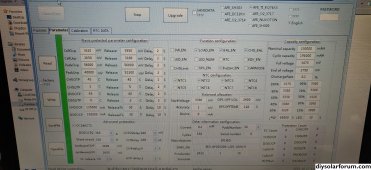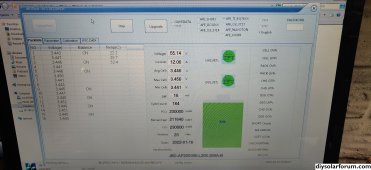Active is moving power not burning it off. I tinkered with this through all of the testing phases & my nasty Thrash tests (pushing to the limit edges" and realized pretty quickly that starting Active balancing at a lower cell voltage actually takes the edge off. With the mix of cells I have, Used EV cells, Bulk, B & A grade, I got to see a bigger picture overall.
If I set to 3.400 to start Active, 2 of my packs will have close to 0.100 deviation BUT when Active starts @ 3.30 by the time we get to float they are 0.020-0.025 so it's a lot less work. I have No Idea WHY people keep thinking that Active wastes the energy, it doesn't, it moves it, with minimal loss.







